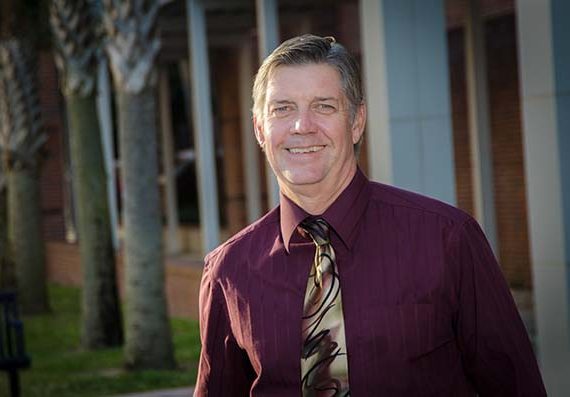Congratulations to Dr. David E. Hintenlang, associate professor & medical physics program director in the J. Crayton Pruitt Family Department of Biomedical Engineering, on his new position as Chief Medical Physicist in the Radiology Department (College of Medicine) at Ohio State University, starting this fall.
Hintenlang earned his Ph.D. degree in 1985 in physics from Brown University where he performed research in magnetic resonance. From 1984-1987 he was located at Walter Reed Army Medical Center where he was involved with a wide variety of clinical and research applications of ionizing and non-ionizing radiations. He moved to a faculty position at the University of Florida in 1987 and had held tenured positions in the departments of nuclear engineering and biomedical engineering.
Hintenlang has served in multiple leadership roles:
- Medical Physics Program Director, 2000-present
- Chair of the University of Florida Radiation Control Committee, 2007–present
- Vice Chancellor of the American College of Medical Physics, 2008-2011
- Director of the UF Nuclear Reactor Facility, 2009-2011
- Interim Department Chairman of the Department of Nuclear and Radiological Engineering, 2009-2012
- Director of the AAPM Clinical Meeting, 2011-2013
- BME Graduate Coordinator, 2012-2015
Hintenlang has broad clinical skills with hands-on experience in all imaging modalities. He is certified by the American Board of Radiology and Florida state licensed in Diagnostic Radiological Physics, approved by the FDA for all mammography modalities, including FFDM, DBT and SBB, and has been responsible for Joint Commission compliance and ACR accreditation programs for CT, MRI, ultrasound and nuclear medicine for a variety of facilities ranging from hospitals to private practice clinics. He has developed an extensive research record with extramural funding and over 90 refereed publications. His research has examined the development of dosimetry and image quality tools to support the optimization of the benefits and minimizing the risks of medical imaging. This work has covered a wide range of applications extending from mammography to CBCT and MV dosimetry.
Hintenlang’s research focuses on developing and characterizing clinical and medical physics applications of radiation imaging and dosimetry. His lab has developed techniques to quantify accurately and minimize pediatric computed tomography (CT) and mammography doses and optimization of image quality. His research areas include image quality, tomographic phantom design and development for radiation dosimetry and applications for non-ionizing radiation on biomedical engineering.
The department is thankful to Hintenlang for his leadership and dedication to BME at UF. We wish him well in his new endeavors at Ohio State!
